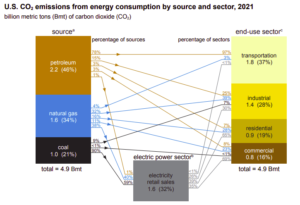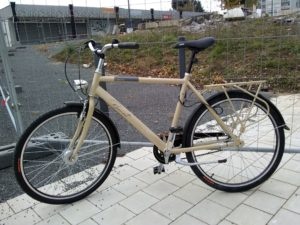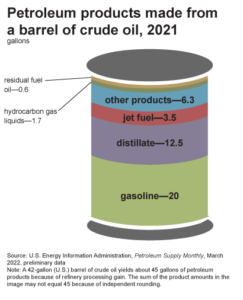Bikes over Cars
6 Reasons to Dust off your Bike
As a bike commuter, I reflect on bike and car culture every day. Biking instead of driving seems obvious. Unfortunately, I’m one of very few in my family, workplace, or friend groups who have adopted this healthy habit.
In this article, I will argue for greater bike use and a diminished reliance on cars, advocate for an active lifestyle and healthy environment, and encourage economic thrift and self-sustainability.
A follow-up article will cover the numerous ways I think we should use to create a societal shift towards a more bike-friendly world.
The figures I use in this article are as recent as possible and come from governmental agencies or other sources of authority. They detail American car/biking practices.
Car use statistics in America likely differ significantly from those of other countries or cities.
Health
According to the Centers for Disease Control and Prevention (CDC,) “Each week adults need 150 minutes of moderate-intensity physical activity and 2 days of muscle strengthening activity…” 1 Yet the “Percent of adults aged 18 and over who met the Physical Activity Guidelines for aerobic physical activity [is only]: 46.9%” 2
Fewer than 50% of Americans are getting the recommended daily physical activity that the CDC recommends; why is that?
I’m sure there are plenty of reasons, but using a bike instead of a car for shorter distances would, without a doubt, help us all stay more active. That’s not pie-in-the-sky either since the Census claims 80.7% of the US population lives within urban areas. 3
America is rural if you count only surface area, but in terms of population, four out of five Americans live in urban spaces. So, it’s not unrealistic to imagine bike usership growing if we take proactive actions to prioritize bike use.
Below are the top ten leading causes of death according to the CDC. 4 I have boldened the numbers that would diminish if Americans get more physically active.
- Heart disease: 695,547
- Cancer: 605,213
- COVID-19: 416,893
- Accidents (unintentional injuries): 224,935
- Stroke (cerebrovascular diseases): 162,890
- Chronic lower respiratory diseases: 142,342
- Alzheimer’s disease: 119,399
- Diabetes: 103,294
- Chronic liver disease and cirrhosis: 56,585
- Nephritis, nephrotic syndrome, and nephrosis: 54,358
One simple activity to reduce your chances of suffering from three of the top ten causes of death in America?
Sign me up for the bike pill!
Safety
Getting in a big car might feel safe. Indeed, improved car safety standards have made car use much safer than it used to be. However, the National Highway Traffic Safety Administration (NHTSA) still found that car accidents were responsible for 38,824 deaths in 2020.5
To put that number in perspective ~39,000 deaths from one year of driving in America is almost ten times the count of American deaths than seven years of open war in Iraq. 6
What better way to limit the number of car accidents than to stop using cars so much?
With fewer cars on the road, more community members will venture out safely by bike and foot. And that’s just the beginning of the change I imagine. By creating dedicated biking infrastructure we can encourage cycling even more. 7
Speed
But driving is so much faster!
Is it really?
According to studies by Deliveroo and the New York City Department of Transportation (NYC DOT) biking is more efficient than cars in urban spaces. 7.1, 7.2 And that is with cars taking up most of the space.
I am not surprised.
Given the need to find the car, navigate through all the stop signs and potential one-way roads, and find parking once you arrive. There are so many more complications to driving than using a bike.
Obviously cars are faster than bikes in certain settings. If you live in a hilly or mountainous area, or if you have a great distance to traverse. Most people can go about 5 miles before cars tip the scale and become a more rapid option.
Considering electric bikes however, the comparison becomes more nuanced. Hills and greater distances are no longer clear arguments for car use.
Pollution
According to the Environmental Protection Agency (EPA,) a “typical passenger vehicle emits about 4.6 metric tons of carbon dioxide per year. “8 Our World in Data claims that “Using a bike instead of a car for short trips would reduce your travel emissions by ~75%.”9
The Intergovernmental Panel on Climate Change (IPCC) shows that human-caused greenhouse gas emissions are the main drivers of the planet’s temperature increase. 9.1
Eliminating these gases from our daily lives would make an enormous positive impact on our world.
For the naysayers, we already have direct evidence that limiting car use leads to vast reductions in C02 Emissions from the Covid lockdowns in 2020. The World Economic Forum says, “COVID-19 lockdowns helped to reduce emissions by 17% in April [2020].” 10
17% of all emissions represents nearly half of all C02 emitted from transportation as an end-use sector according to the Energy Information Administration (EIA.) 11

As urban spaces are currently designed, some distances are unmanageable by bike alone. But, just by reducing our dependence on cars, we can reduce pollution significantly.
Costs
It won’t surprise anyone that bikes are cheaper than cars. But by how much?
It all depends on what kind of bike or car you are comparing.
Bike costs:
According to bikedenver.org “The price point of bikes fluctuates within quite a wide range, from $100 to $3500, depending on the type you choose.” 12 Pedelchelf.com gives ranges from $200 to $1,500. 13 This squares with my own experience. Yes, there are bikes available at supermarkets or used bike centers near the bottom of that range. And for commuting purposes, a bike that costs $1000 is unnecessary (electric bike prices are higher.)
I spent ~420€ on my present commuter and a little more than twelve months later, a further ~50€ on repairs. Add in the obligatory safety equipment and bike panniers for a further $100-$150 and you start to see the real price.

Car costs
Statista says: “In 2021, the average selling price of used vehicles came to around 26,700 U.S. dollars.” 14 Of course most people don’t buy a ‘new’ car every year. So this figure needs to be tempered down by time.
But, there’s more than the purchase price that needs to be calculated when comparing bike and car prices. One also needs to take into account the costs of fuel, insurance, licensing, and repairs. The Bureau of Labor Statistics (BLS) has done all these calculations and tells us that “Consumer spending on vehicles averaged $8,427 in 2016.” 15 That squares with Nerdwallets’ range of $526-$716/month based on if the car is used or new. 16
Lets do a little paper napkin calculation. I propose using the higher end of the price range for bikes and the lower end for cars. We can see that biking, even counting the fanciest, newest bike on the market (excluding sports bikes) will beat out the ugliest beater in terms of price within 6 months.
Plus you’ll have thighs.
For even more articles about bike use, see Mr. Money Mustache’s site. He is a rockstar for making empowering economic arguments that will also leave you feeling stronger, healthier, and more free.
Self-sustainability
This is an argument better leveled at governments than at individuals because it is the government that determines policy. Though everyone should be interested in self-sustainability, it is for governments to take wise actions to encourage it. With transportation in particular because we are talking about scale.
This can all get a little confusing with terms that in spoken language are often interchangeable: fuel, oil, gas, gasoline, and petrol. I’ll try to break it down into understandable chunks.
The term fuel covers coal, natural gas, wood, biomass, oil, etc.
Oil means the crude oil that other fossil fuels come from.
Petrol and gasoline are synonyms for the refined fluid that comes from Crude Oil. In this discussion we are not talking about natural gas which is a non-fluid fossil fuel.
What to retain:
- 28% of America’s energy usage is dedicated to transportation, of which a large part are lightweight cars and trucks. 17
- American crude oil production minus exports equals 8,279 million barrels per day. Another 6.278 million b/d are imported, meaning that America imports ~43% of its crude oil. 17.5
This is where it gets a little confusing because America refines crude oil into different petroleum products. Some of these products are destined for industry, electricity generation, or for air transport.

Though the preponderance of US transportation fuel comes from domestic sources, Russia and Saudi Arabia represented 8% and 5% of total petroleum (including crude oil) imports as a percentage share of total petroleum imports in 2021. 20
Aside from being partially dependent on others, paying the governments of countries like Russia and Saudi Arabia bothers me. Russia and Saudi Arabia are known for their repression of domestic communities. Women in Saudi Arabia. And for the two: political opponents, the LGBTQ+ community, religious minorities, and on and on.
Now, Russia has started a war on a peaceful neighbor state.
So every time a person fills their tank, they give a portion of their money to undemocratic and dangerous regimes.
Imagine instead all that money spent at home on things to make our lives healthier, prettier, and more fulfilling.
Though America is more and more transitioning to cleaner fossil fuels at home and is exporting more and more fossil fuels abroad, why not help out the effort and make America even more self-sufficient?
Please see the article below to see the 9 small changes we can put in place now to transition to a more bike-friendly urban landscape. If you want to look at more biking stats, please see here.
What are your thoughts about Biking? Are you frustrated with Car-culture too?